Brain 101
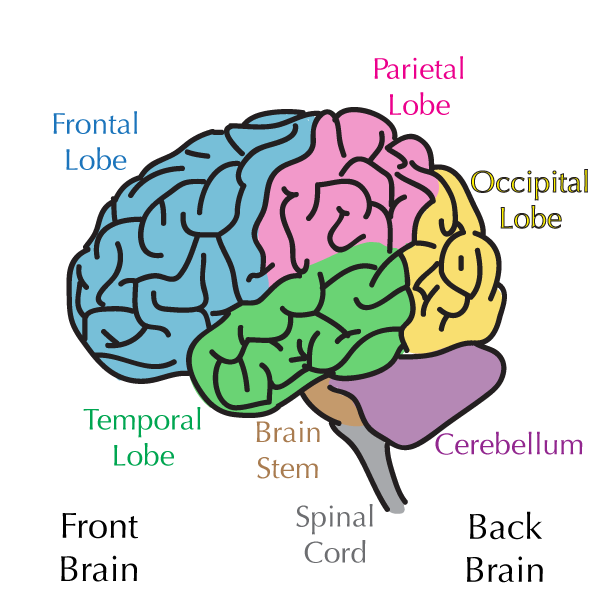 This is the second article in a series on brain health. In case you missed my post introducing this series on brain health, click here for the scoop. Read on to learn about some brain basics in preparation for the rest of this series where I’ll write about brain health and degeneration, how it relates to autoimmunity, and ideas on how to pursue brain healing.
This is the second article in a series on brain health. In case you missed my post introducing this series on brain health, click here for the scoop. Read on to learn about some brain basics in preparation for the rest of this series where I’ll write about brain health and degeneration, how it relates to autoimmunity, and ideas on how to pursue brain healing.
Having a grasp of brain structure and function really helps in understanding how it affects how you feel on a daily basis. Let’s start with the basics.
Some Interesting Facts
- The human brain weighs about 3 pounds. That’s the weight of 1.5 liters of water
- It has the texture of tofu
- The brain uses about 30% of the body’s glucose
- The brain uses 20% of the body’s oxygen
- We have between 87 billion and 100 billion neurons (nerve cells) in our brain
- The outer brain’s folded appearance increases its surface area, allowing for many more neurons
- The brain is constantly engaged in electrical impulses that send messages throughout the body
- Your brain is made up of about 75 percent water
- After the water, the remaining matter is about 60 percent fat
- There are no pain receptors in your brain
- Contrary to popular myth, we don’t use only 10% of our brain; we use the whole thing, though not necessarily all at once
Sections of the Brain
The brain is divided into sections that have specific functions. Because this series is focused on brain impairment and the search to restore brain health, below I’ve included typical brain functions as well as some of the symptoms of brain impairment. Keep in mind that many of these symptoms can be related to issues other than brain degeneration.
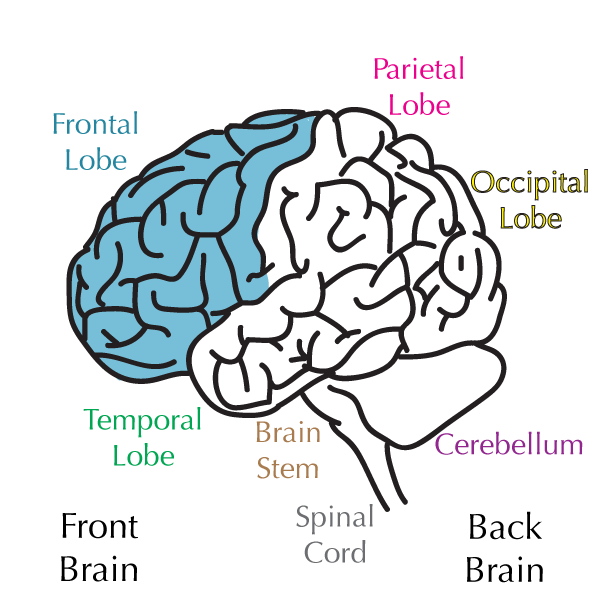 Frontal Lobe
Frontal Lobe
The frontal lobe is largest lobe of the brain. It is located immediately behind the forehead and between the temples. Its functions include: higher cognitive skills, personality, emotional makeup, motivation, planning, follow through, suppression of impulses, and initiation and coordination of movement.
Symptoms of Frontal Lobe Degeneration Include:
- depression
- poor handwriting
- mental sluggishness
- poor impulse control
- slower muscle movement
- inappropriate social behavior and judgment
- decreased ability to set goals and follow through on them
- poor muscle-coordinated learning such as dancing and sports
- poor cognitive function, including learning in math, language and philosophy
The frontal lobe is what neuroscientists pay attention to when looking at depression.
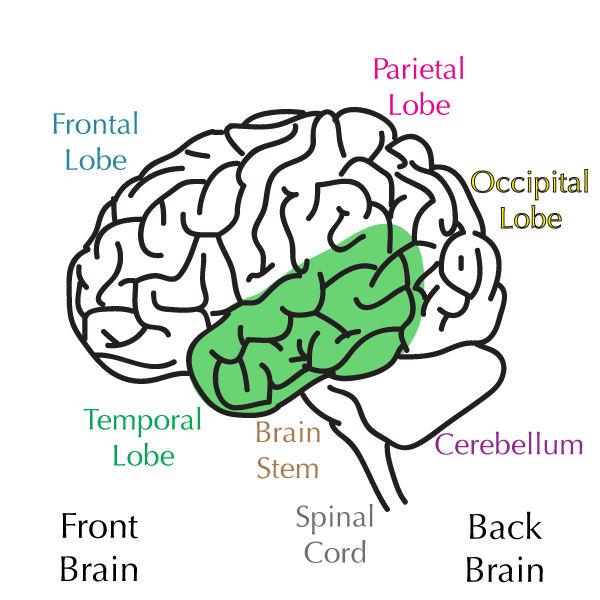 Temporal Lobes
Temporal Lobes
The temporal lobes are located on either side of the brain above the ears. Their functions include: hearing, speech, memory, emotional response and sense of smell.
Symptoms of Temporal Lobe Degeneration:
- poor memory
- difficult hearing with background noise
- episodes of tinnitus (ringing in the ears)
- abnormal shifts in fatigue throughout the day
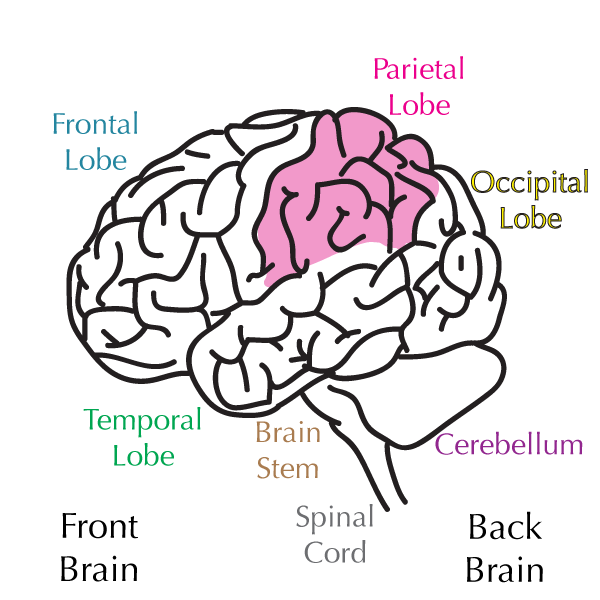 Parietal Lobe
Parietal Lobe
The parietal lobe is located directly behind the ears. Its functions include: sensory processes, attention, language and determination of where the body is in space.
Symptoms of Parietal Lobe Degeneration:
- feeling unstable in darkness
- difficulty navigating spaces, even familiar ones
- inability to recognize objects through touch
- difficulty perceiving where limbs are and becoming prone to falls
- difficulty understanding spoken and/or written language
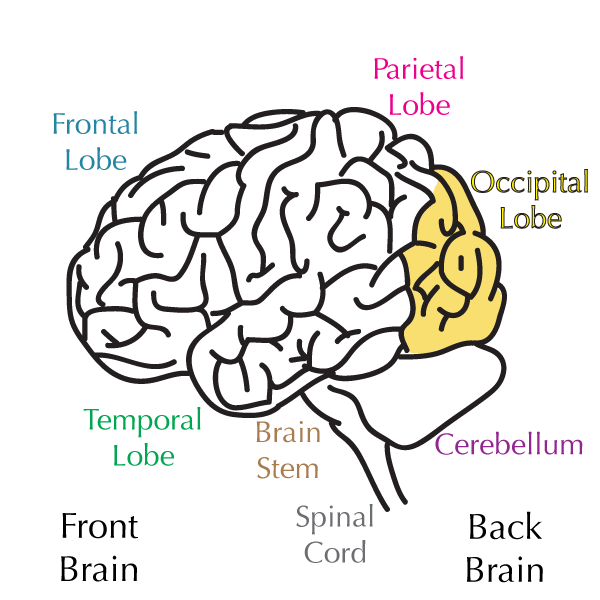 Occipital Lobe
Occipital Lobe
The occipital lobe is located in the back of the head. Its main functions include: processing visual information including shapes, colors, motion and difference between colors.
Symptoms of Occipital Lobe Degeneration:
- visual floaters
- visual hallucinations
- difficulty processing visual information and recognizing shapes
- persistence or reoccurrence of visual image after it has been removed
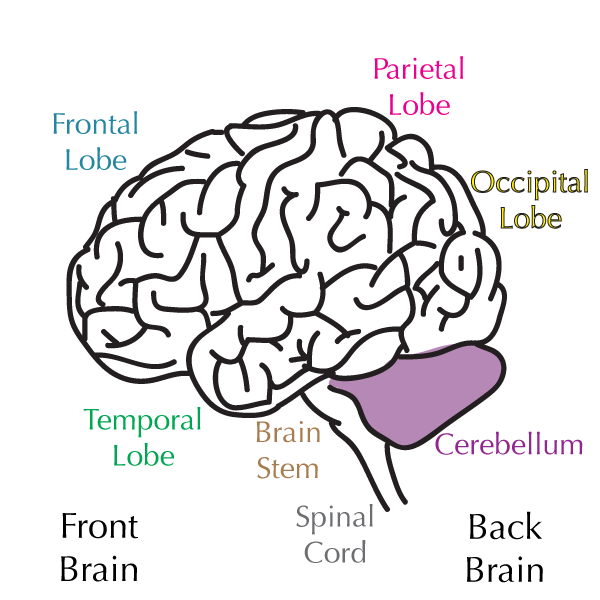 Cerebellum
Cerebellum
Situated in the back of the head in what is called the hindbrain, the cerebellum has two distinct lobes, located right above the neck. Functions include: controlling movement and cognitive processes that require precise timing, and interpreting information from the inner ear for determining balance.
Symptoms of Cerebellar Degeneration:
- dizziness, vertigo
- nausea from visual inputs, such as car sickness
- poor balance
- becoming nauseated from staring at stripes or bold patterns
- subtle shakes at end stages of movement, such as reaching a hand out to find it shakes at arm’s reach (this differs from Parkinson’s shaking)
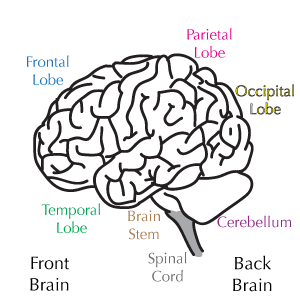 Spinal Cord
Spinal Cord
The spinal cord is the extension of the brain that runs vertically through the vertebral column. It is the central channel that transfers sensory information between the brain and the rest of the body.
The Nutshell
The brain is made up of regions that control specific behaviors, functions, and processes in the body, mind and personality. During our development, or as a response to brain impairment, these regions express changes through obvious signals in our function and behavior. In my next post, I’ll talk about what the brain is made of, and how it communicates. After that we’ll explore some of the reasons the brain becomes impaired, and how that might relate to autoimmunity.
http://brainhealthbook.com/
http://www.brainfacts.org/brain-basics/neuroanatomy/articles/2012/mapping-the-brain/
Mercola website, 1/22/09. “Fascinating Facts You Never Knew About the Human Brain.”
http://articles.mercola.com/sites/articles/archive/2009/01/22/fascinating-facts-you-never-knew-about-the-human-brain.aspx